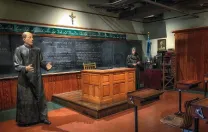By the time the talented and shrewd Samuel Slater arrived in Pawtucket, Rhode Island, in 1790, the race to mechanize was on. Groups of carpenters and mechanics, funded by businessmen, were urgently trying to move beyond hand- and animal-power —to catch up with water-fueled, industrialized England. Some even sent scouts “to try and get a glimpse of what was going on over there,” says Lori Urso, executive director of the Old Slater Mill Association, steward of the Pawtucket site where America’s industrial revolution officially began.
Slater had worked at a state-of-the-art cotton mill in England for seven years, starting at the age of 14, and brought with him both the secrets of its patented machinery’s inner workings and, more importantly, a keen sense of their systematic coordination, required for successful, large-scale production. Convinced that England’s textile industry was overextended, he aimed to leverage his knowledge abroad. “Like so many others, he came to the New World for opportunity,” says Urso, “and he must have known what he was doing, taking the information out of England, because he didn’t tell anyone else—not even his mother—that he was leaving. So, over there, he is ‘Slater the traitor,’ and here he is ‘the father of American manufactures.’”
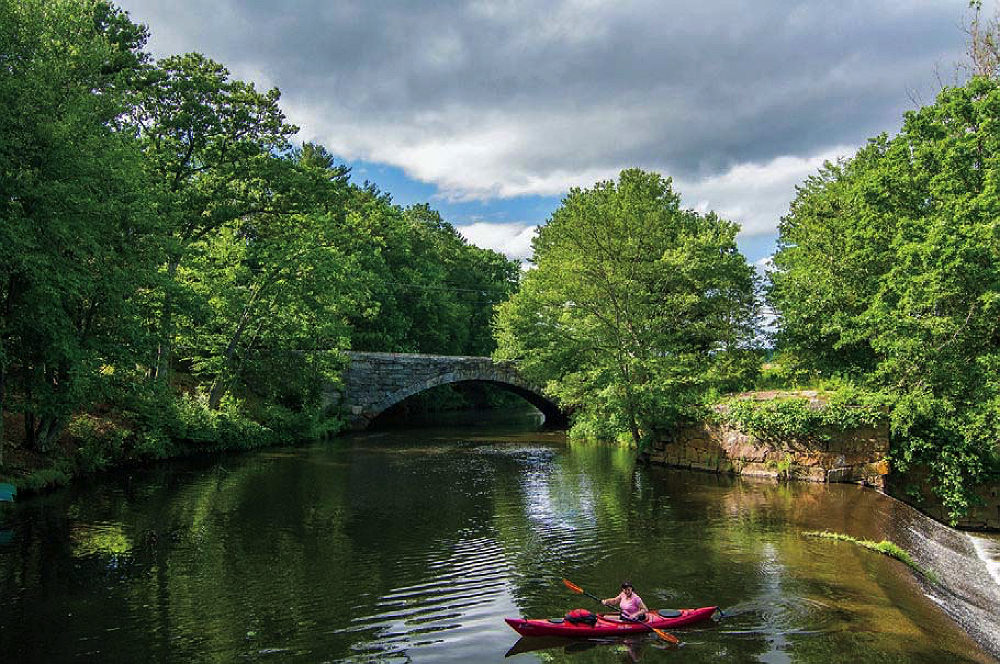
Paddling the waterway
Photograph by Norman Eggert/Alamy Stock Photo
Visitors to the Old Slater Mill National Historic Landmark also learn that, contrary to popular myth, he didn’t accomplish that alone. The Blackstone River, which runs 48 miles from Worcester, Massachusetts, through Pawtucket, ultimately emptying into Narragansett Bay, was already powering valley farms, cottage industries, and artisans’ workshops during the colonial era. Landing in New York in 1789, Slater heard about promising efforts in Pawtucket (a hub for the region’s best ironworkers, mechanics, and carpenters) to advance existing spinning jennies; he traveled there to meet prominent Quaker and businessman Moses Brown, and quickly went to work with the machinist and brilliant inventor David Wilkinson and woodworker Sylvanus Brown, among others. Nearly a year later, guided by Slater’s specifications for new parts, the group had built the nation’s first successful water-powered cotton-spinning machine. Other preparatory machines followed, to break down the bales of raw cotton sent north from slave plantations, and then clean, fluff, and entwine strands (a process called roving) tightly enough to feed them into the spinner, according to Urso. Prior to mechanization, all that work was done by hand, she reiterates: “it could take a year for a mother to make a dress for her daughter.” The new mill, built and owned by the Almy, Brown & Slater Company, opened in 1793 with nine employees, all younger than 12. That practice was common in English factories, partly, Urso reports, because children were nimble and energetic and their “quick little hands” could better accommodate machinery’s moving parts. American child labor laws would not exist for another century.
That mill, and the larger White Mill that Slater built separately with Wilkinson across the river in 1797—which instead of filling custom orders pumped out cotton thread continuously, the system Slater envisioned, and split with Almy and Brown to pursue—became the model for more than a hundred other mills built in Rhode Island by 1815.
“The inventions and technology that first came out of that little Pawtucket building changed this entire valley landscape from farms into mills, and then into mill and factory complexes,” says ranger and historian Kevin Klyberg, of the Blackstone River Valley National Historical Park. “And then that, of course, just got duplicated and expanded all over New England and the Northeast.” Industrialization and the economic booms that followed—the massive mid-nineteenth-century factory complexes in Lawrence and Lowell, Massachusetts, and Manchester, New Hampshire—irrevocably shaped core aspects of the emerging nation’s character, and the lives of its people. “Mechanization determined where and how people worked and lived, and even how they thought about their own identities,” adds Klyberg; especially dramatic, and ultimately (so far) irreversible, was the shift from value, earnings, and trades derived from products grown and made by families, to “an hourly wage for the amount of time people spent with a machine.”
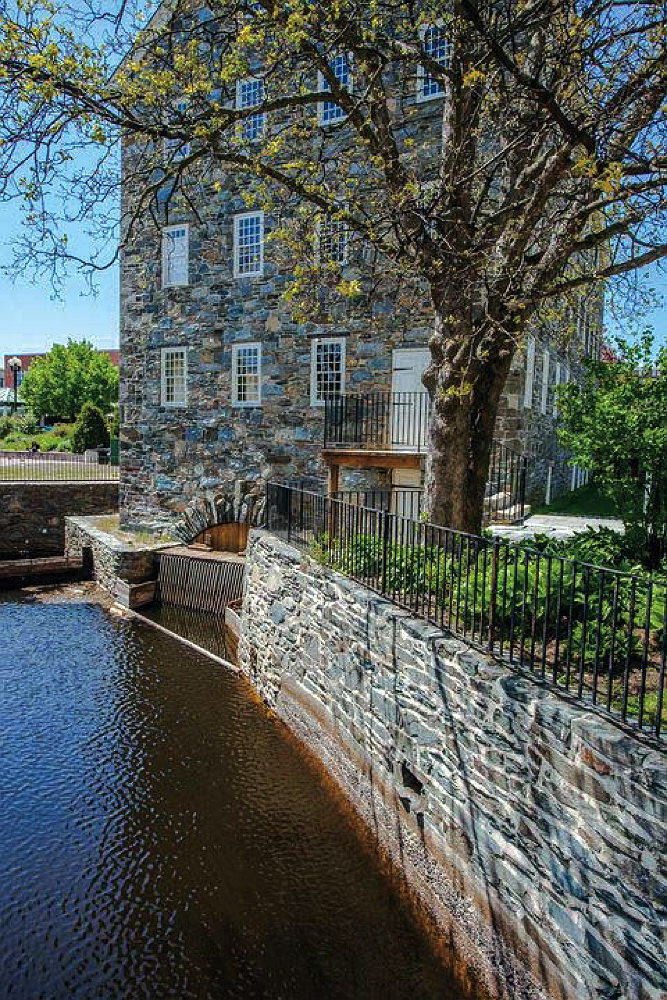
The 1810 Wilkinson Mill
Photograph by Norman Eggert/Alamy Stock Photo
That race to catch up and compete with England—price wars raged for decades as the nations vied to produce and sell the most goods—also coincided with the seminal debate between Thomas Jefferson and Alexander Hamilton over which governing and economic engines would prevail in the new country, and America’s push for independent commerce and trade. Definitions and measures of “progress” and “success,” for both individuals and the nation, began to be standardized and, literally, weighed and clocked by the wealth-holders: the new textile-manufacturing and other producers who increasingly controlled workplace conditions and the demand for labor. Over time, Klyberg notes, that also led to the influx of immigrant workers, the rise of labor unions, widescale railroad infrastructure, and even corporate-like business structures: “So much of what we consider modern America starts in the stories of these little valley towns and villages along the Blackstone River.”
Waves of industrial activity through the nineteenth century, he explains, resulted in “almost constant innovation, change, and expansion.” During the first half of the 1800s, fights over water rights accounted for a third of the lawsuits filed in Rhode Island, according to Klyberg. Farms and food production also evolved fairly quickly, growing from subsistence farming to production levels that fed valley neighbors now working in the mills. The advent of rail lines and travel to the Midwest “meant that grains and meats could be produced more cheaply out there and shipped east,” he adds, “so local farms went to eggs, dairy, and vegetables—perishables that don’t travel well.” Worcester and Pawtucket became the commercial hubs, but mills and factories sprouted up along the river and its tributaries. Industrialization, like the crucial power looms manufactured in Hopedale, Massachusetts, at the Draper Corporation (once one of the world’s largest producers), spread beyond textiles to hundreds of different products: rubber, wire, tools, steam engines, toys, and paper. Production peaked in the post-Civil War era, in the age of steam, roughly between 1870 and 1920. But the majority of enterprises were shuttered before, or by, the Great Depression.
Efforts to highlight and preserve the tangible aspects of this early history led to the 1986 designation of the Blackstone River Valley National Heritage Corridor, which covers 25 communities within the watershed, each with its own self-guided tours. The Blackstone River Valley National Historical Park, established in 2014, encompasses six non-contiguous sites within that corridor: the Old Slater Mill complex, Captain Wilbur Kelly House Transportation Museum/Blackstone River State Park, Ashton, and Slatersville (in Rhode Island), plus the Massachusetts communities of Whitinsville and Hopedale.
Of the national park venues, the Old Slater Mill landmark site—which includes the 1810 Wilkinson Mill and machine shop and the 1758 artisan’s cottage once lived in by Sylvanus Brown—and the Kelly House Transportation Museum, offer exhibits, events, lectures, and guided tours from early spring through October. Klyberg reports that the innovations at the Slater and White Mills were followed by “this wildcat phase from about 1810 to 1815 where—almost like the tech boom of the 1990s, when everyone’s saying ‘Hey, I got this computer in my basement, let’s make a billion dollars!’—local valley farmers are saying, ‘Hey, I’ve got six machines and a farm, let’s go make a textile mill!’” That’s what happened six miles upriver from Pawtucket, in Lincoln, Rhode Island, across from what’s now the Kelly House. Local farmers opened a small mill in 1810, which struggled and ultimately failed. Retired sea captain Wilbur Kelly bought it in 1823, and essentially “personifies the change from a merchant economy to a full-scale industrial economy in Rhode Island, with the infrastructure to support it,” according to Klyberg.
Besides the mill, Kelly bought a swath of riverfront property, and then parlayed his connections to shipping magnates and his assets into partnerships in four major valley mills. Adjacent to one that no longer exists, he built a modest clapboard house in 1835 for his son, a mill supervisor.
Now a museum, the Kelly House’s exhibits and tours chronicle the valley’s “transportation transformation,” as Klyberg puts it—from traditional Native American paths and horse-and-cart trails through construction of the Blackstone Canal and the Providence and Worcester Railroad, and the advent of street cars. The Kelly era, he says, reflects bigger investors entering the industrial arena—envisioning far more than simply textile production. Horse carts and wagons had transported valley commercial goods, but Kelly and others, inspired by the Erie Canal, pushed for a valley canal, which operated from 1828 to 1848, transporting food, commercial goods, and even passengers. Photographs and a video help illustrate the massive, three-year, primarily hand-dug effort, at its peak employing more than 1,000 laborers—African Americans and Irish immigrants, among others—wielding picks, shovels, and wheelbarrows to create the roughly eight-foot trenches and fortified banks. The lock systems alone required skilled quarrymen, carpenters, masons, and blacksmiths to construct manual and mechanical systems. In time, though, the canal was supplanted by railroads, just as steam had replaced water as the source of factory power by the late 1830s.
The Kelly House sits on a lovely spot, with picnic tables and benches, between the river and canal, and along the scenic 11.5-mile Blackstone River State Park Bikeway, which makes use of the former tow paths. Within sight of the museum, and across a bridge over the narrow river, stands the 1867 Ashton Mill. It was built after Kelly’s death by the Lonsdale Company, which developed three distinct self-contained mill villages: Ashton, Berkeley, and Lonsdale.
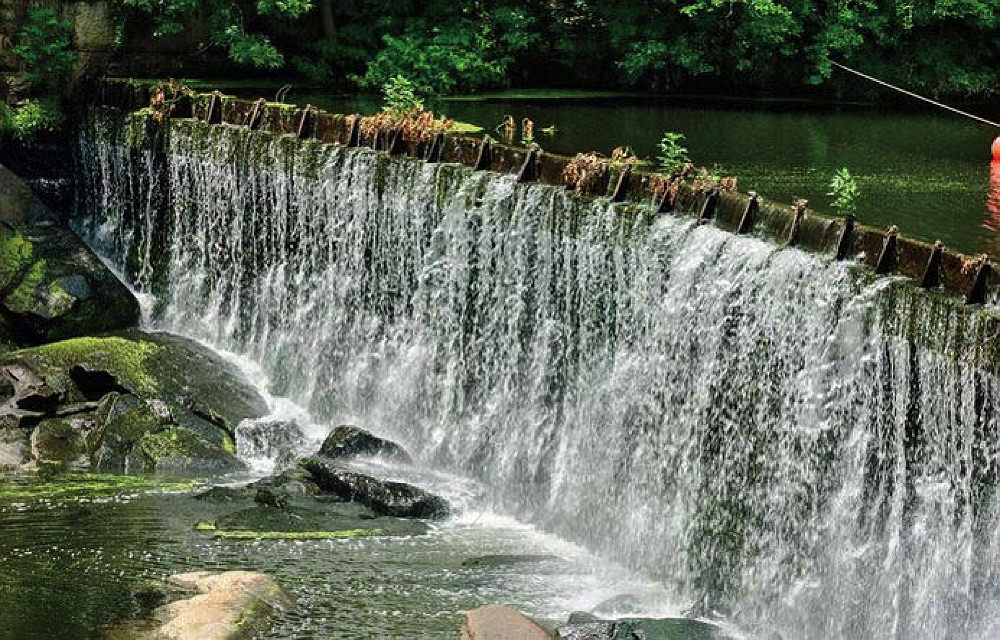
Trails wind around the Blackstone Gorge, in Massachusetts.
Photograph by vinoverde / Alamy Stock Photo
Meandering around the mammoth brick structure, it’s easy to see how the valley’s 25-plus communities were developed in relation to these lucrative industrial sites. “The companies built everything residents needed—the mill, housing, railroads, churches, schools, cemeteries,” Klyberg says. “And when you think about it, that sums it up. That’s your life, that little pocket—until the days of the street cars in the late 1800s, when people could travel a little more.” The national park is gathering oral histories from families whose relatives worked in the Ashton mill, which was last owned by Owens Corning and produced fiberglass until 1983. It has since been converted into private apartments, but duck into the lobby to get a sense of the scale and architecture of the original operations. Then head farther down the road to check out the original mill workers’ homes. All but one remain, and have been rehabbed for subsidized housing.
The Ashton Mill was originally a full-service operation, turning raw cotton into sheeting/cloth that was transported south to the company’s Lonsdale Mill bleachery and dye house. In countless places, the valley landscape and Blackstone River were re-engineered to benefit industrial operations during more than a century; the companies also produced grievous water and air pollution, even into the 1960s. Federal mandates starting in the 1970s, however, forced clean-up efforts that would enable the area to start shifting “from being an industrial sewer to being a park land,” Klyberg reports, “and that is really the current chapter of the Blackstone River: looking at it as a recreational resource, whether it’s paddling or going on the bike path or coming out with a park ranger to take a walk and learn some of the stories of what’s gone on here.”
The Blackstone River State Park Bikeway, currently connecting Cumberland and Woonsocket, Rhode Island, is a terrific way to explore the region. Stop at the Woonsocket end of the bikeway to visit the Museum of Work & Culture, located in a former mill building, which chronicles the history and culture of French-Canadian immigrants who flocked to the valley. During its industrial heyday, in fact, Woonsocket was almost completely French-speaking (see “La Survivance”).
Scheduled construction this spring and summer is focused on extending that bikeway, especially developing the new off-road connecting stretch (of less than 1.5 miles) between where it now ends in Woonsocket, and where the 3.5-mile Massachusetts bikeway (part of the Blackstone River & Canal Heritage State Park) begins. Eventually those two primary pathways will be linked with the overarching Blackstone River Bikeway, to run 48 miles between Worcester and Providence, linking to the beautiful 14.5-mile East Bay Bike Path ending in Bristol.
Meanwhile, the Massachusetts 3.5-mile bikeway in the Blackstone River & Canal Heritage State Park starts in the town of Blackstone and goes north, ending in Uxbridge, Massachusetts. The path variously follows the river, canal, and railroad routes through town and rural sections, with playground areas, benches, and places to break for food and drinks.
From the state park’s Uxbridge base, at the River Bend Farm Visitor Center, explore more of the valley’s restored natural beauty. Take the easy Canal Towpath trail, stopping at the Goat Hill Lock, or roam past fields, cross a river footbridge, and head to Lookout Rock for valley views. The state park offers regular walks and talks at various historic sites including the Millville Lock and the Blackstone Gorge. These tours help highlight just how prevalent relics and other vestiges of this history are in the valley, hundreds unmarked and unheralded. Visitors might also take the Uxbridge self-guided tour that outlines the town’s textile history, dating to an 1809 woolen mill, the precursor to other mill complexes, like the Stanley Woolen Mill that anchors the state park’s southern entrance. That 1850 brick structure now houses the multi-dealer Stanley Mill Antiques, good for relaxed indoor meanderings—and hunts for purchasable industrial artifacts—after the nature trails.
Wherever visitors choose to go in the valley, they will find evidence of American industry and Samuel Slater’s legacy. He died in 1835, having played a role in developing multiple mill communities, including Webster, Massachusetts, where his grave at Mount Zion Cemetery is marked by a simple granite obelisk. “If we think of that mechanical history as a pebble thrown into a pond,” Klyberg notes, “then all the ripples coming off it are what really makes this a rich story. And here we are, more than 150 years later, with people still living and working here—so they did something right!”
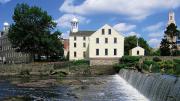
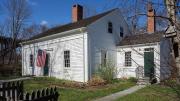
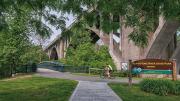
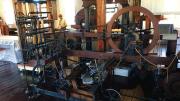
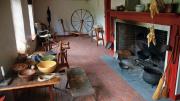
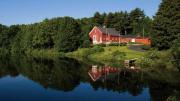
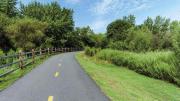
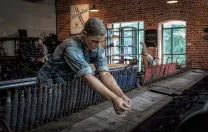 ,
,
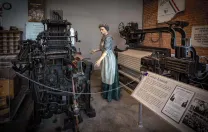 ,
,
